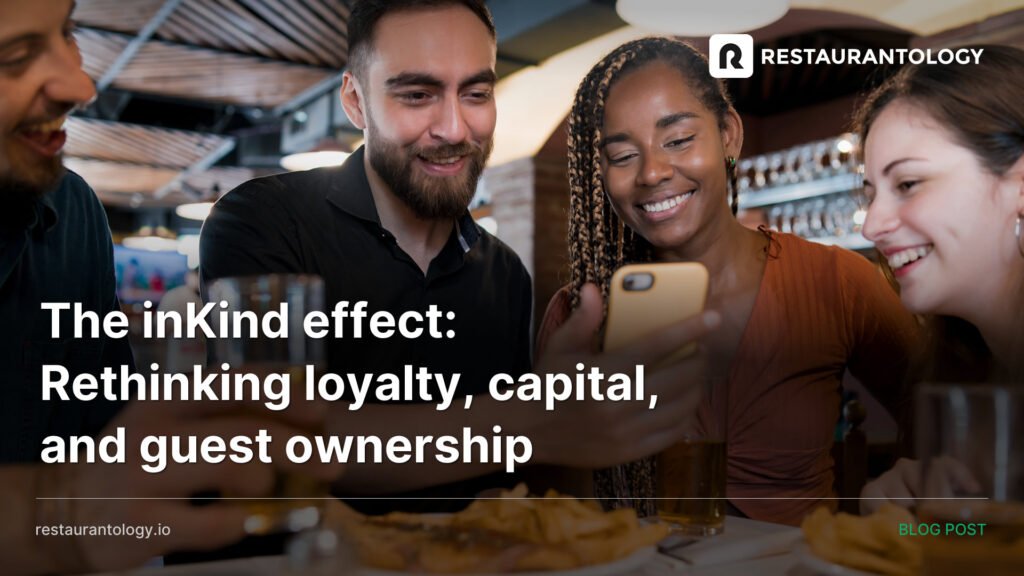The inKind effect: Rethinking loyalty, capital, and guest ownership

Since late 2024, Restaurantology has been tracking accelerating detection signals for inKind across our network of multi-unit restaurant websites. As of February, signals have climbed to 224 brands—with 152 in IND, 59 in SMB, and 13 in MM. Month-over-month growth has steadily ticked upward, and the scale of their IND reach suggests something deeper than simple capital deployment.
What we’re seeing may be a masterclass in how to break CAC constraints by reinventing the funding model altogether.
How inKind makes money, and why it matters
At first glance, inKind looks like a financing solution. Restaurants receive upfront capital from inKind and pay it back through prepaid dining credit that guests redeem over time. But this isn’t a loan. There’s no interest. No repayment schedule. Just a trade: money now, guests later.
Here’s the catch—inKind owns the guest. Guests purchase credit through inKind’s platform, often receiving a bonus incentive ($125 in dining credit for $100, for example). inKind pockets the spread and becomes the primary customer touchpoint, with control over the data and frequency mechanics.
This model doesn’t just provide liquidity. It reroutes loyalty.
Challenging the traditional tech stack
inKind sits at the intersection of FinTech, loyalty, and guest acquisition—without technically selling software. And that might be the real unlock.
- For loyalty providers, inKind introduces a different kind of stickiness. Not points or tiers, but prepaid emotional commitment.
- For CDPs and email platforms, it introduces a trade-off: capital for data.
- For marketplace-minded restaurants, it offers discovery and repeat frequency without paying for impressions.
It’s a model that traditional SaaS can’t easily replicate. And one that many tech vendors may be underestimating.
Why this is working
inKind has something most restaurant tech companies don’t: margin.
Because their revenue comes from capital spreads, they can afford to deploy in-market reps, absorb acquisition costs, and still win on upside. This unlocks lower-segment brands (IND, SMB) that SaaS companies often avoid due to CAC constraints.
And because implementation is lightweight—no hardware, no integrations—growth compounds quickly. We’ve seen inKind add roughly a dozen multi-unit brands each month, with no signs of slowing.
Final thought
The inKind model isn’t just about capital. It’s about changing the mechanics of how restaurants acquire guests, drive frequency, and assign value to data.
If inKind continues to scale across segments, the implications extend beyond FinTech. This could reshape how the industry defines loyalty, evaluates guest ownership, and builds modular tech stacks.
As always, our goal is simple: to help restaurant tech vendors align their GTM strategies with what’s actually happening in the field. If your target customers are choosing capital over software, it’s worth asking why—and what it signals.
Restaurantology can help you find the answer.

